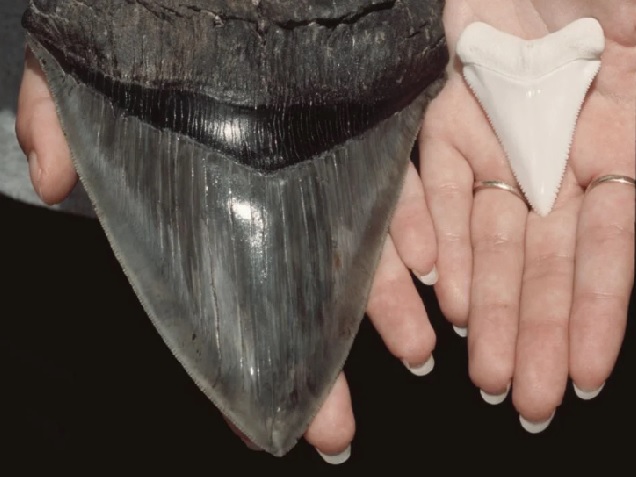
Megalodon tooth and bull shark tooth (Photo: Red Historia)
 This important discovery took place in the Xoc cenote (Xoc meaning Shark in the Mayan language), located in the district of Cholul, within the Mérida municipality. Fossilized vertebrae of extinct animals and human bones were found embedded in the walls of this underwater cave. The discovery was made by speleologist and photographer Kay Nicte Vilchis Zapata and Erick Sosa Rodríguez, his partner.
This important discovery took place in the Xoc cenote (Xoc meaning Shark in the Mayan language), located in the district of Cholul, within the Mérida municipality. Fossilized vertebrae of extinct animals and human bones were found embedded in the walls of this underwater cave. The discovery was made by speleologist and photographer Kay Nicte Vilchis Zapata and Erick Sosa Rodríguez, his partner.

Researcher Kay Vilchis diving in a Yucatán cenote (Photo: Daily Mail)
Footage shows the moment Vilichis finds a tooth and gives the ‘okay’ sign to show his excitement.
Zapata told local media: ‘We were looking at the wall and suddenly I saw a little something, I went closer and I saw that it was a tooth, that was the first and apparently it belonged to a sawshark.’
According to Vilichis, an initial exam of the thirteen shark dental fossils and their size and shape revealed that they might have belonged to the prehistoric and extinct species of Megalodon shark (Carcharocles megalodon), the mackerel shark (Isurus oxyrinchus) and the sawshark, the last two of which are not extinct.

Fossilized shark tooth (Photo: Pixabay)

